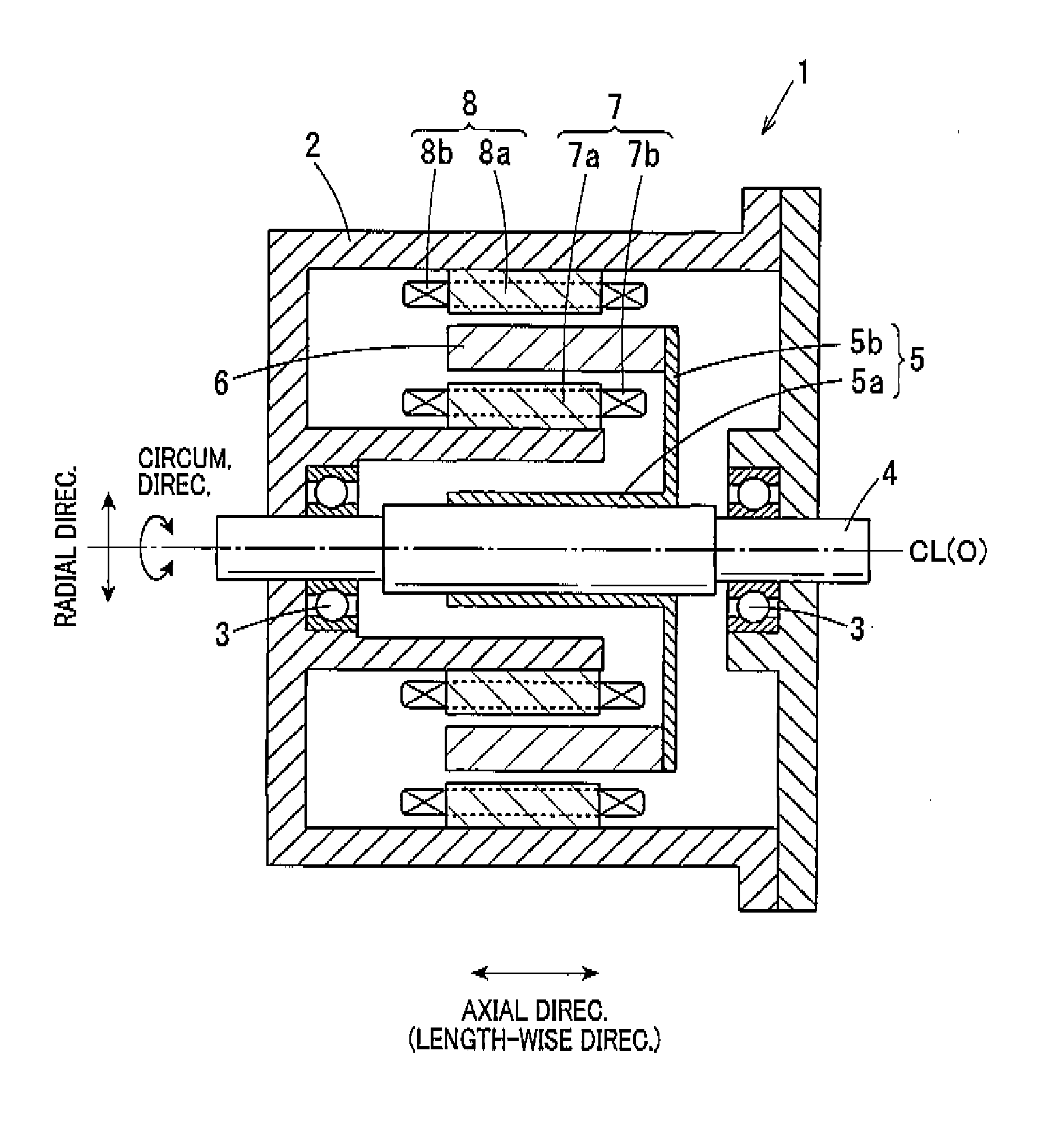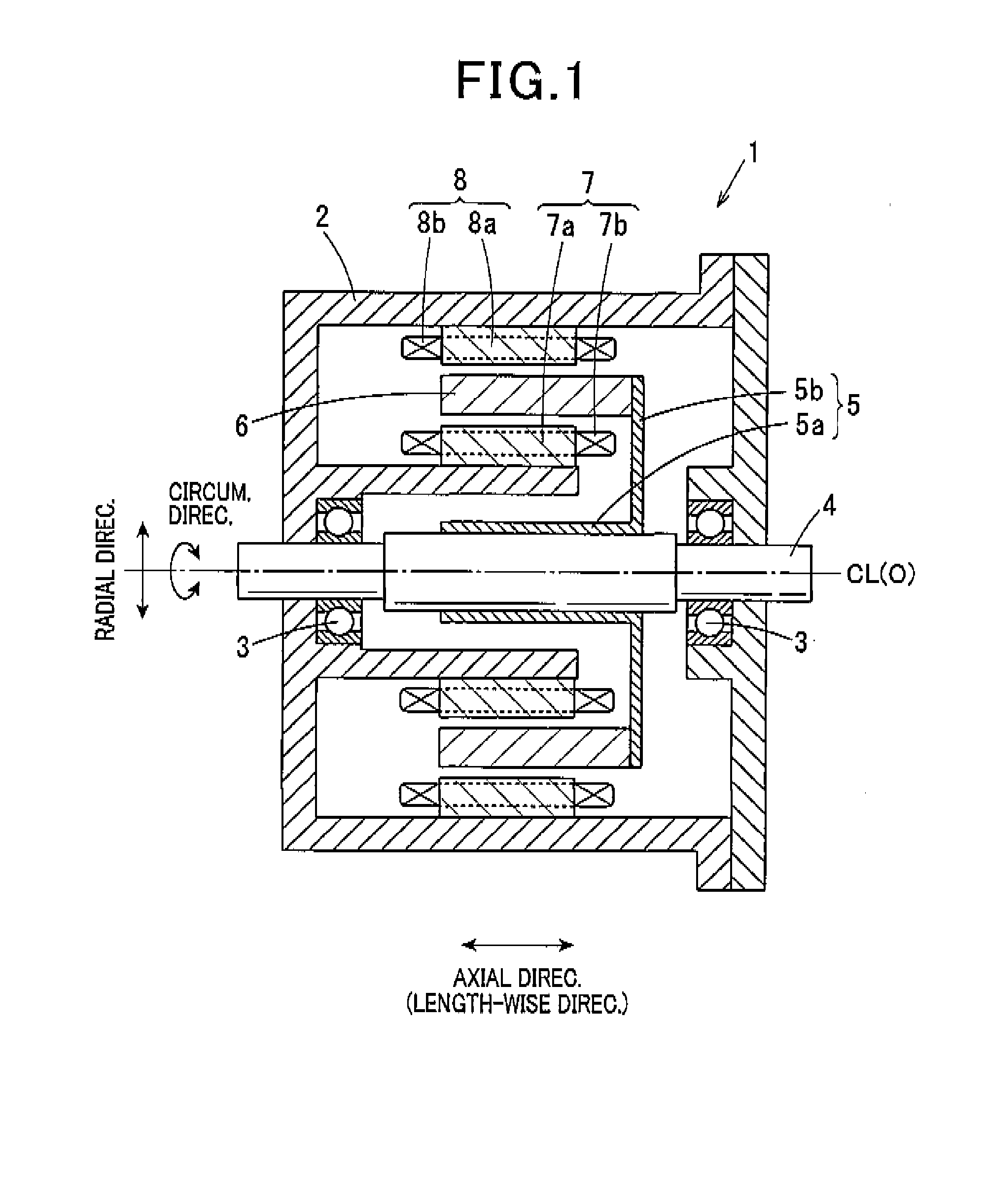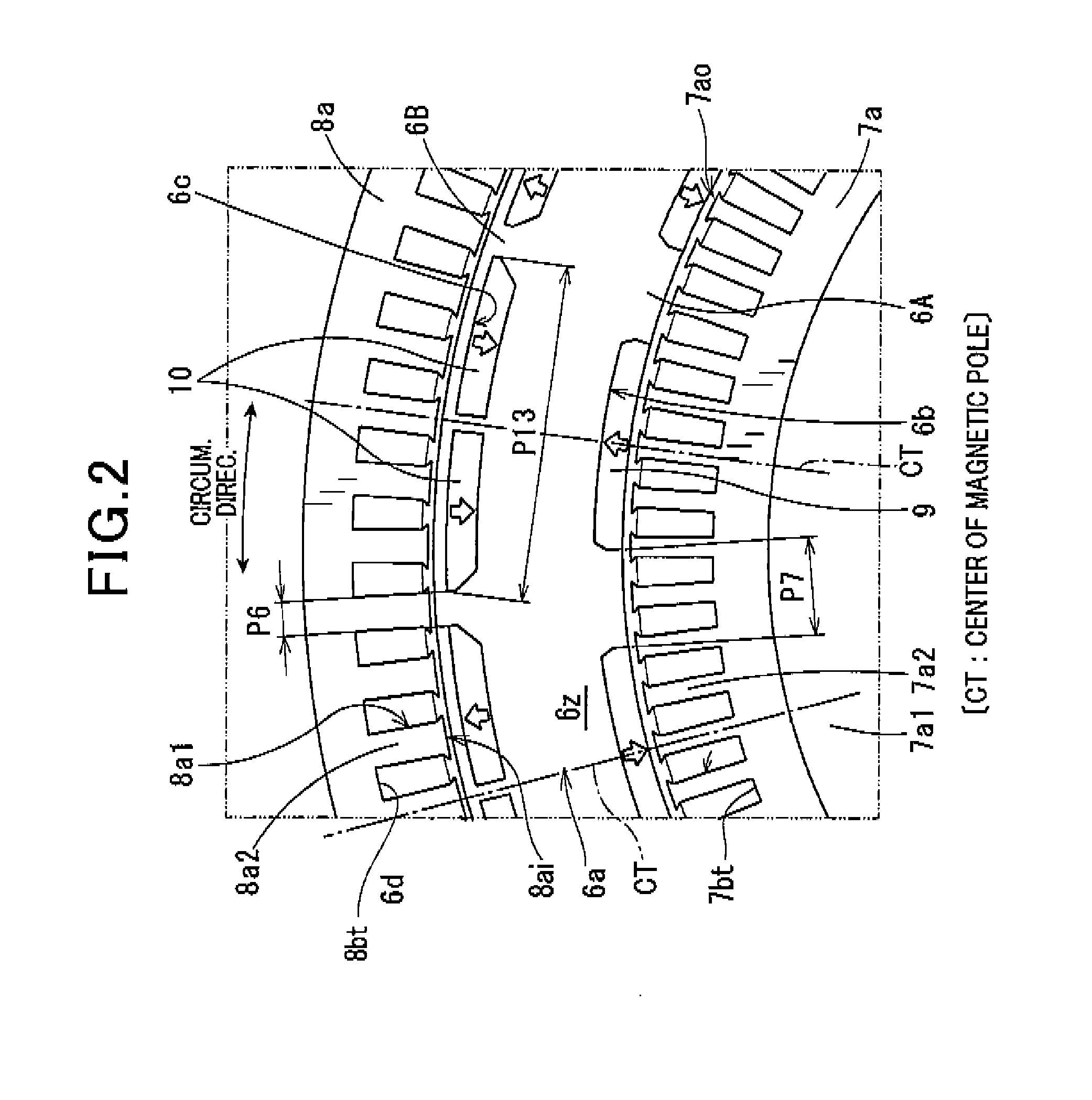Multi-gap type rotary electric machine
a rotary electric machine, multi-gap technology, applied in the direction of dynamo-electric machines, magnetic circuit rotating parts, magnetic circuit shape/form/construction, etc., can solve the problems of increasing magnetic resistance, inability to increase power density, and inability to fully use resistance torque, so as to minimize the effect of magnetic saturation and preventing local demagnetization
- Summary
- Abstract
- Description
- Claims
- Application Information
AI Technical Summary
Benefits of technology
Problems solved by technology
Method used
Image
Examples
first embodiment
[0059]Referring, first, to FIGS. 1 to 5, hereinafter is described a first embodiment of the present invention.
[0060]In the first embodiment, the multi-gap type rotary electric machine of the present invention is applied to a drive motor 1 which is installed in a vehicle or the like.
[0061]FIG. 1 is a vertical cross-sectional view illustrating a configuration of the motor 1. As shown in FIG. 1, the motor 1 of the first embodiment includes a motor housing 2, a shaft 4, a rotor 6, an inner stator 7, and an outer stator 8. The shaft 4 is rotatably supported by the motor housing 2 via a baring 3. The rotor 6 is in an annular shape and supported by the shaft 4 via a rotor retaining member 5. The inner stator 7 is arranged radially inside of the rotor 6. The outer stator 8 is arranged radially outside of the rotor 6.
[0062]The shaft 4 is configured to rotate on a length-wise central axis CL passing through a center O in a circular section of the shaft 4, which section is orthogonal to the le...
second embodiment
[0095]In the second embodiment, dimensional ranges at portions related to the magnetic circuits of the motor 1 are set, on condition that the requirements of Formulas (1) and (2) of the first embodiment are met.
[0096]FIG. 6 is a cross-sectional view illustrating the magnetic circuits of the motor 1 according to the third embodiment. Portions in the magnetic circuits shown in FIG. 6 are denoted as P1 to P13 as follows. It should be appreciated that P6 (outer-salient-pole width), P7 (inner-salient-pole width) and P13 (outer-magnet width) are the same as those of the first embodiment.
[0097]The outer diameter of the outer stator 8 is referred to as outer-stator outer diameter and denoted as P1.
[0098]The diameter of each outer slot 8a1 is referred to as an outer-stator inter-slot diameter and denoted as P2. That is, this diameter P2 is a radial distance between the bottoms of two of the outer slots 8a1, which passes through the central axis CL, that is, the center O, of the shaft 4, as s...
third embodiment
[0114]The third embodiment deals with an example of a triple-gap type motor 1. FIG. 11 is a vertical cross-sectional view illustrating a triple-gap type motor 1 of the fourth embodiment. As shown in FIG. 11, the triple-gap type motor 1 includes a side stator 12 that faces an end face of the rotor 6, which is axially opposite to the rotor disc (on the left in FIG. 11), with a gap therebetween. The side stator 12 includes a side stator core 12a and a side stator winding 12b. The side stator core 12a is connected to the inner and outer stator cores 7a and 8a. A full-pitch winding of the side stator winding 12b is applied to the side stator core 12a. The side stator winding 12b serially connects between the inner and outer stator windings 7b and 8b.
[0115]The triple-gap type motor 1 forms magnetic gaps in three faces between the rotor 6 and the stators 7, 8 and 12. Accordingly, when the requirements of Formulas (1) and (2) of the first embodiment are applied to the magnetic circuits of ...
PUM
 Login to View More
Login to View More Abstract
Description
Claims
Application Information
 Login to View More
Login to View More - R&D
- Intellectual Property
- Life Sciences
- Materials
- Tech Scout
- Unparalleled Data Quality
- Higher Quality Content
- 60% Fewer Hallucinations
Browse by: Latest US Patents, China's latest patents, Technical Efficacy Thesaurus, Application Domain, Technology Topic, Popular Technical Reports.
© 2025 PatSnap. All rights reserved.Legal|Privacy policy|Modern Slavery Act Transparency Statement|Sitemap|About US| Contact US: help@patsnap.com



